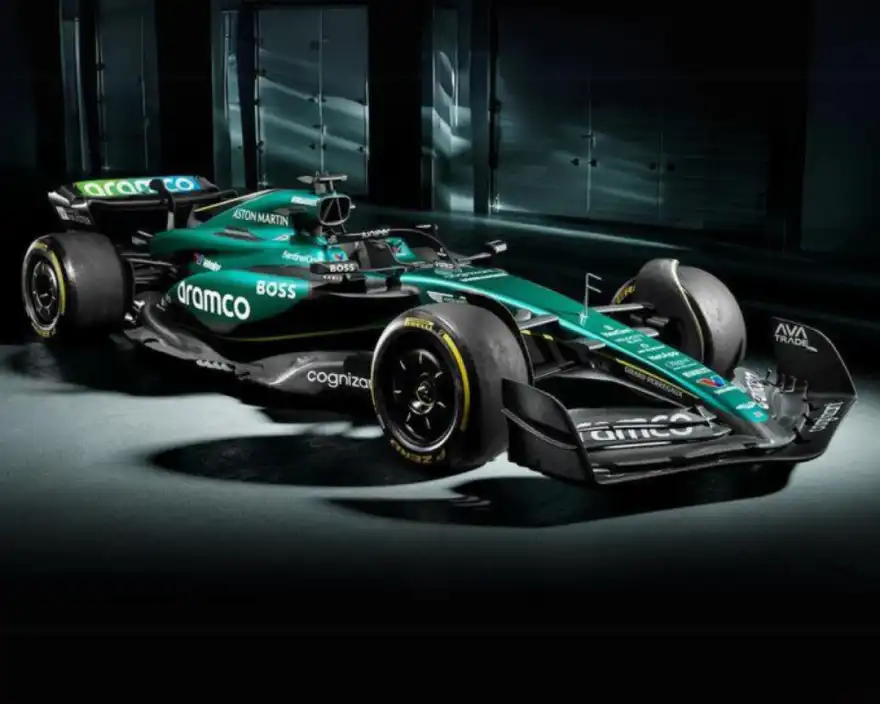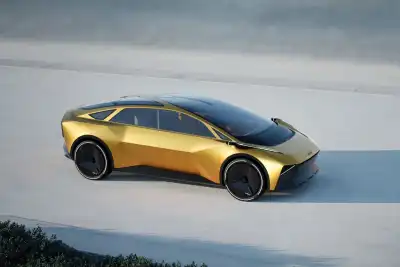
F1 has made its return this week with pre-season testing getting underway in Bahrain.
It's been almost three months since the chequered flag waved in the 2023 Abu Dhabi Grand Prix and, since then, Williams confirmed Logan Sargeant for 2024, while Lando Norris and Charles Leclerc secured long-term contracts.
But those stories were blown away by the huge news that Lewis Hamilton will drive for Ferrari from the 2025.
That news was still the talk of the paddock before pre-season testing actually started in Bahrain, but once the cars hit the tarmac for the first time, talk has been dominated by Red Bull's air inlets and the choice between push-rod and pull-rod suspensions.
What is the difference between a push-rod and pull-rod on an F1 car?
A Formula 1 car's suspension comprises upper and lower wishbones – carbon fibre bars that absorb road shocks – linking the chassis to the wheels.
Between the wishbones, both at the front and rear, lies a suspension rod, either a push-rod or a pull-rod, connecting the wheel to a horizontal torsion spring. This spring stores and releases energy, twisting when force is applied, contributing to the car's stability over uneven surfaces.
A push-rod is positioned high on the chassis, connected to a low point on the wheel. When the wheel encounters bumps or kerbs, it pushes on the torsion spring, causing the push-rod to move upwards and towards the chassis. In contrast, a pull-rod, positioned low on the chassis, connects to a higher point on the wheel, resulting in the pull-rod moving upwards and outwards when the car encounters bumps or kerbs.
Both configurations have their pros and cons, with the choice depending on the team's preferences and fitting into the overall aerodynamic concept of the car. For instance, a pull-rod offers better weight distribution by placing components closer to the ground, crucial for ground-effect cars, enhancing drag reduction, cornering ability, and potentially improving aerodynamics. On the other hand, a push-rod is more practical, providing a cleaner local aerodynamic footprint and facilitating easier maintenance for mechanics.
The push-rod configuration offers enhanced stability and cost-effectiveness. However, its effectiveness may vary from one car to another, as is the case with the pull-rod. The decision often hinges on weighing aerodynamic and performance advantages against cost considerations and practicality, especially in the context of the ground-effect era.
In some cases, F1 teams opt for a hybrid approach, utilising both configurations by employing a pull-rod at the front and a push-rod at the rear, or vice versa. This strategic choice allows teams to leverage the specific benefits of each configuration for optimal performance.
Which Formula 1 teams employ a push-rod or pull-rod suspension in their cars?
Red Bull and McLaren have stood as the exclusive users of a pull-rod configuration for their front suspension in the past two years of ground-effect cars.
However, Sauber and RB have now also opted for for a pull-rod configuration at the front for the upcoming 2024 season.
Sauber has undergone substantial changes following poor 2023 season with technical director James Key, who joined Sauber from McLaren in September 2023, being a key figure in the team's adoption of a pull-rod setup.
The trend at the rear of the car is for teams to shift towards push-rod configurations. Eight teams are adopting this approach in 2024, compared to five in 2023 - Mercedes and its customer outfits, excluding Williams, have all made this transition.
| Team | Suspension choice in 2024 F1 season |
| Red Bull | Pull-rod front, push-rod rear |
| Mercedes | Push-rod front, push-rod rear |
| Ferrari | Push-rod front, pull-rod rear |
| McLaren | Pull-rod front, push-rod rear |
| Aston Martin | Push-rod front, push-rod rear |
| Alpine | Push-rod front, push-rod rear |
| Williams | Push-rod front, pull-rod rear |
| RB | Pull-rod front, push-rod rear |
| Sauber | Pull-rod front, push-rod rear |
| Haas | Push-rod front, push-rod rear |
History of the push-rod and pull-rod suspension
The history of push-rod and pull-rod suspensions traces back to the 1960s and '70s, initiated by the introduction of a push-rod by the esteemed car designer Colin Chapman, founder of Lotus. Chapman implemented an inboard suspension on the Lotus 21, securing a second-place finish in the 1961 F1 championship.
Gordon Murray of Brabham revolutionised suspension design in 1979 by introducing the pull-rod configuration on the BT49. This innovation offered increased flexibility compared to the outdated hydro-pneumatic suspension, resulting in a lowered centre of gravity and improved overall performance.
In the following years, Brabham's Nelson Piquet claimed the 1981 drivers’ championship with a pull-rod suspension. Despite its success, the use of pull-rod suspensions declined in the 1990s due to the introduction of a minimum ride height rule, necessitating a higher center of gravity for cars.
The resurgence of pull-rod suspensions occurred in 2009 under revised regulations that moved the diffuser rearwards. Red Bull, under the guidance of Adrian Newey, adopted a pull-rod configuration with the RB5, capitalising on low sidepods to lower the car's centre of gravity and enhance rear airflow. Despite using a single diffuser compared to Brawn's double diffuser, Red Bull nearly outperformed the eventual world champions.
In 2010, Red Bull attached a double diffuser to the RB6 alongside a pull-rod suspension, marking the beginning of a remarkable four-year streak of consecutive double world championships with Sebastian Vettel at the helm. This success prompted a trend, with 10 out of 12 teams adopting pull-rod suspensions in 2011, and Ferrari and Sauber joining the majority the following year.
Ferrari remained the last team to use a pull-rod suspension for several years, featuring it in the SF15-T in 2015, before the dominance of push-rods once again took over.
The reintroduction of ground-effect cars in 2022 presented a fresh opportunity for pull-rod suspensions, leveraging the advantages gained by running closer to the ground.



